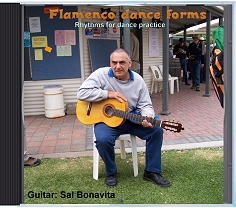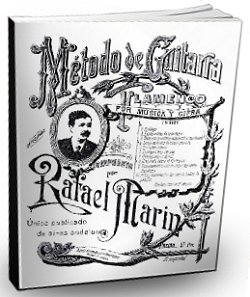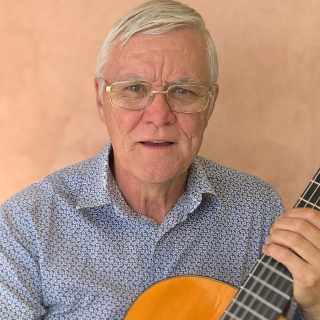Video demo of palmas technique
Demo 1) Sordas: (soft)
Demo 2) Fuertes: (loud)
Demo 3) Four cycles of basic Buleria palmas alternating between hard and soft.
Fuertes: (loud or strong). Alternative terms for loud
palmas are Seco: (dry) or Claro: (clear)
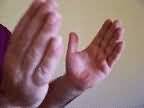
|
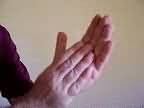
|
|
Hard start
|
Hard finish
|
Sordas: (soft) From the word sordo meaning muted or
muffled
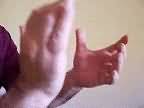
|
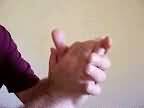
|
|
Soft start
|
Soft finish
|
It's not about strength:
Getting a clear and loud sound with palmas takes some practice. It is NOT about forcefully smacking the hands together as if you enthusiastically applauding a children's puppet show. More force equals less speed and accuracy. If your hands hurt or sting, you are doing it wrong and you will not be able to sustain it for very long. Once you get the hang of it you will find the actual force used to get strong sounding palmas is almost nothing and can be sustained for long periods.
Cup the left palm:
Keep the left hand palm curved slightly. This creates a small pocket of air as the right hand makes contact and is the thing that gives you volume. You need to experiment a bit with the actual point of contact and the force of impact until you can feel this pocket of air being compressed.
Contra tiempo and speed:
But getting a strong sound is only half the issue. In a well structured beginners class, there is time set aside for a palmas session when the dancers might gather near the guitarist to practice palmas, guided by the teacher's prompts. That's what happened in the classes I played for anyway. The most difficult part for beginners seems to be clapping contra tiempo (in between the beats). Clapping on the beats is hard enough for some people. Increase the tempo and the clapping wanders all over the place. Since syncopated counter rhythms play such an important part in flamenco, there is no getting away from it. Palmas is a good way to develop a sense of rhythm if you aint got no rhythm in your bones. If you do have a sense of rhythm to start with, learning palmas becomes just another rhythmic technique and is easy to master once you get the hand positions right.
Just a personal observation:
I have noticed that even relatively inexperienced flamenco guitarists can do good palmas without the formal training the dancers get in class. I think this is because they already have a well developed sense of rhythm from accompanying the dance. In any case it is not an easy thing to produce strong palmas. At some stage it's a good idea for a guitarist to learn palmas, even if it's just to supply a rhythm base for a second guitarist during a rehearsal or practice session.
Useful links
Clapping compás rhythms - audio/video (Learn about flamenco)



